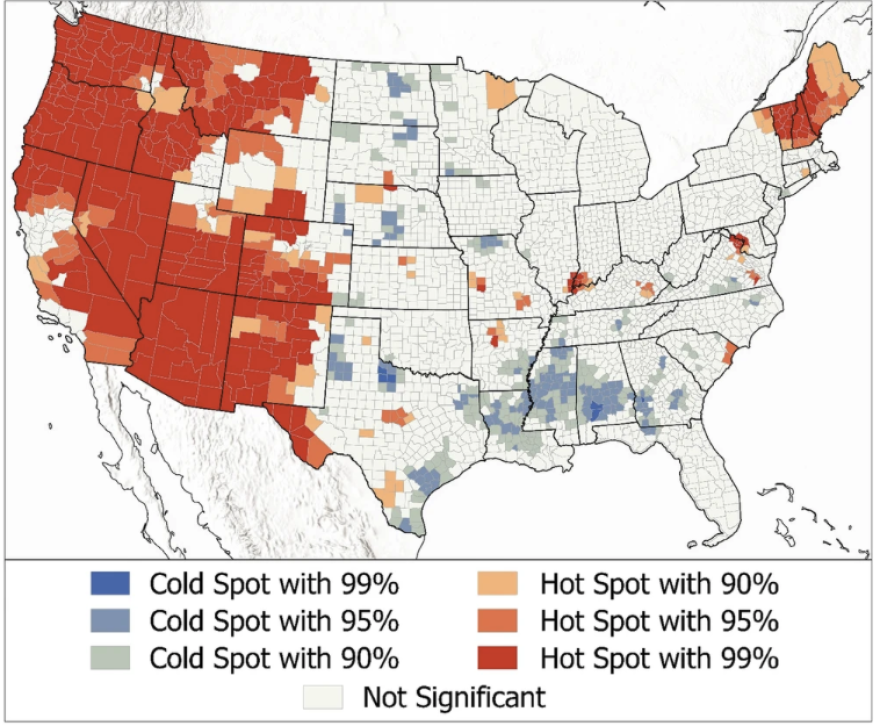Published March 15, 2024 at 6:17 PM MDT
No disrespect to fans of the X-Files, but If the truth is out there, rural Utahns might be the first to see it.
A recent study from the University of Utah says most of the state is considered to be a hot spot for seeing Unidentified Anomalous Phenomena, the official term for UFOs.
While there’s plenty of cultural interest in aerial anomalies, there hasn’t historically been a lot of scientific research on this topic because of a stigma that’s kept academics from taking it seriously.
“It’s a valid question to ask, right?” said Richard Medina, the study’s lead author and University of Utah associate professor of geography. “If you see something you can’t explain, why can’t you ask? And why would you not approach that scientifically?”
The study sorted through nearly 100,000 UFO sightings reported to a national database from 2001-2020 and mapped them on a per capita basis. The data will serve as a baseline for future research so they can more easily identify when a sighting might be some kind of threat — whether that’s from a foreign military object or something beyond.
Simon Brewer, who did much of the data analysis, worried it might not show a whole lot because anyone can submit a sighting report. Instead, he found a clear trend.
“This dataset could just be filled with a load of hoaxes and pranks, and if that was the case, we wouldn’t really expect to see much of anything,” Brewer said. “The sort of strength of the pattern, particularly between the east and the west of the United States, was really marked and quite surprising.”

Medina, Brewer & Kirkpatrick. Sci Rep (2023)
/
CC BY 4.0
The map the team compiled showed that most of the rural western U.S., including all of southern Utah, has a high number of UFO sightings. East of the Rocky Mountains, however, the prevalence of these hot spots — even among rural areas — drops off significantly.
A lot of this trend, Brewer said, can be explained away by environmental factors. It’s a straightforward calculation: If a place has little light pollution, a lack of obstructions from trees or clouds and a lot of people recreating outdoors at night, that increases the chances of someone seeing something.
But that’s only half of the equation.
“Two things that we always have to look at is the possibility of things being in the sky and secondly, how people perceive that possibility in each region,” Medina said.
“I think it tells us a lot about the spatial aspects of culture and how we interpret these things in different places.”
Americans, he said, have been conditioned to associate certain celestial phenomena with remote desert areas. Think Roswell, New Mexico, and Nevada’s Area 51.
That cultural influence could make it more likely that someone would perceive an object as something strange and report it. It’s similar to the dynamic of people saying they see a sasquatch or chupacabra in areas where those fabled creatures have been reported in the past.
“If it’s in the realm of possibility, then it’s more likely you’re going to see that specific thing,” Medina said. “It just gives us this perception that that’s what you see here.”
The next step in this research is to zoom in on the data and figure out some of its unanswered questions. Pursuing those cultural correlations is one of them. Another is figuring out why certain places are geographic outliers.
Some parts of the West, including far northern Utah and southeast Idaho, did not show up as hot spots even though they share many of the same environmental factors as neighboring areas. A large swath of New England, for example, was a hot spot even though it’s closer to big cities and did not match the cultural characteristics of the West. In the rural southeast, some areas classified as cold spots — meaning they had fewer UFO sightings than would be expected.
Brewer and Medina also plan to study why certain dates have seen a spike in sightings and how cultural triggers, like a rocket launch or a TV show, can influence the frequency of these reports.
They hope this initial study can help break the ice and get other scientists to take a closer look at what Americans see in the heavens, too.
“It’s important that this report destigmatizes this as an area of scientific study because it is something that I think is broadly of interest — both culturally and from a national security standpoint,” Brewer said. “So if we’ve been able to contribute to that, I think that will be a good outcome.”










Más historias